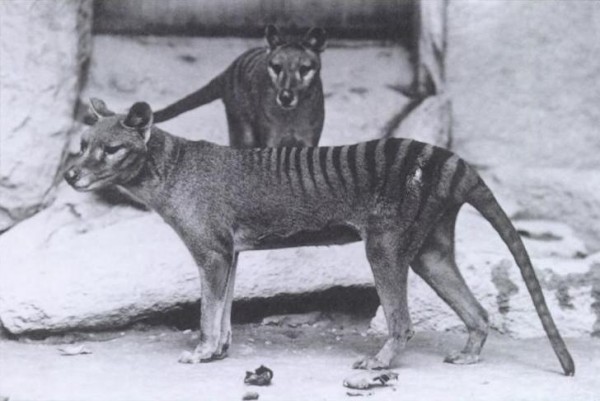By Ana Verayo, | April 03, 2017

Tasmanian tigers in Australia no longer extinct? Or just plain elusive from human activity?
Scientists have long thought that the Tasmanian tiger has been extinct, however, a new sighting in North Queensland in Australia led a new search for the thylacine. The Tasmanian tiger (Thylacinus cynocephalis) appears to be striped similar to a tiger but its head appears to be of a wolf's. This creature appears to be a dog with a stiff and pointed tail with a large head and striped fur.
Like Us on Facebook
The major cause of the extinction of these unique creatures is due to the bounty offered by the Van Diemen's Land Company and the local Tasmanian government before the 20th century. The thylacines preyed on sheep in the region, where the last known Tasmanian tiger died inside a zoo in 1936.
However, this recent sighting of the Tasmanian tiger alerted the scientific community as details provided accurately described the distinct features of the thylacine. According to former Queensland tourism operator Brian Hobbs, during one his camping trips in 1983, he thought he saw a Tasmanian tiger family.
Hobbs details how his pet dog which was a German shepherd suddenly got frightened during the middle of the night. After putting his dog on the leash, he searched the ravine area of the camping grounds with a flashlight. Hobbs turned to see numerous pairs of red eyes glaring at him, where he saw a male and a female with two pups. He was around 20 meters of the Tasmanian tiger family. He adds, I never saw any creature such as these in my life.
Hobbs explains that these supposedly extinct species were shaped like dogs however using a flashlight, they possessed tan coloring with distinct stripes on their sides. This extremely detailed report of Hobbes led to a team from the James Cook University to investigate the elusive and probably extinct Tasmanian tiger.
According to the lead author of the study, Bill Laurance of the James Cook University, we have compared and checked with Hobbs' descriptions, from their eye shine color, body shape and size, animal behavior and other features. These are also inconsistent with similar dog sized species like dingoes or wild dogs, including feral pigs.
The study is still ongoing where the team plans to distribute 50 camera traps around the Cape York Peninsula in northeastern Australia. If the existence of these thylacines is not conclusive, the team will still be able to provide useful data regarding other wildlife populations in Cape York.
-
Use of Coronavirus Pandemic Drones Raises Privacy Concerns: Drones Spread Fear, Local Officials Say

-
Coronavirus Hampers The Delivery Of Lockheed Martin F-35 Stealth Fighters For 2020

-
Instagram Speeds Up Plans to Add Account Memorialization Feature Due to COVID-19 Deaths

-
NASA: Perseverance Plans to Bring 'Mars Rock' to Earth in 2031

-
600 Dead And 3,000 In The Hospital as Iranians Believed Drinking High-Concentrations of Alcohol Can Cure The Coronavirus

-
600 Dead And 3,000 In The Hospital as Iranians Believed Drinking High-Concentrations of Alcohol Can Cure The Coronavirus

-
COVID-19: Doctors, Nurses Use Virtual Reality to Learn New Skills in Treating Coronavirus Patients







